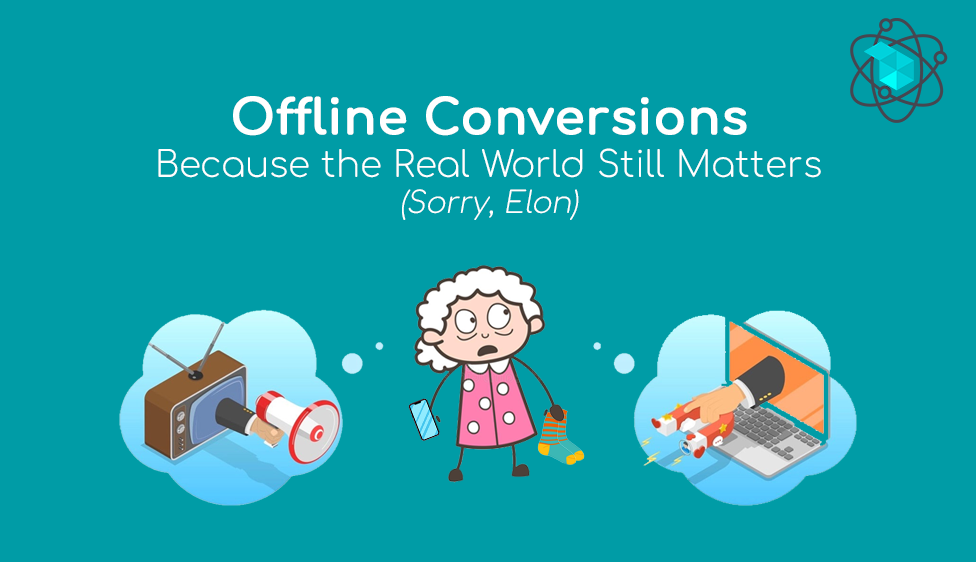In today’s digital age, it’s easy to get caught up in the online world of advertising and analytics. But let’s not forget the impact of those pesky offline conversions – you know, the ones that happen outside of our beloved screens. Whether it’s a phone call, an in-store purchase, or even a carrier pigeon delivery (okay, maybe not that last one), these events can have a big impact on your bottom line. Offline conversions can be the missing piece of the puzzle when it comes to understanding the true value of your online marketing efforts.
So, what are offline conversions, and why do they matter? We’re here to shed some light on that and how to manage them like a pro. We’ll break down what offline conversions are and why they should be on your radar. Fear not, we’ll also get into the nitty-gritty of managing the integration of offline conversion data with your online platforms. Oh, and we’ll explain the difference between primary and secondary conversions (it’s not as complicated as it sounds).
By the end of this article, armed with the knowledge to optimise your offline conversion tracking and make data-driven decisions, you’ll drive success for your business. Plus, who knows, you might even impress Elon with your newfound appreciation for the real world (but no promises).

Defining Offline Conversions
Hold on to your seats, folks! It’s time to dive into the wild world of offline conversions. You know, those pesky events that happen outside of the digital realm – like when your grandma walks into a store and buys socks. But seriously, tracking offline conversions is no laughing matter. It’s a crucial element of any successful marketing campaign, as it helps businesses gain valuable insights and understand the true ROI of their efforts.
So, what exactly are offline conversions? Well, they can come in many shapes and sizes. From counting customers making purchases in a brick-and-mortar store, to tracking leads over the phone or email, offline conversions are any event that happens outside of your digital space. By attributing these offline conversions to specific advertising efforts, businesses gain a more comprehensive view of campaign effectiveness.
But tracking offline conversions isn’t a piece of cake. Accurately tracking and attributing offline conversions to specific advertising efforts requires using the right tools and methods. Plus, businesses must be mindful of privacy concerns when collecting and storing offline conversion data. We wouldn’t want your grandma’s personal information falling into the wrong hands!

So, the next time your grandma buys a new pair of socks, remember – it’s not just a purchase, it’s an offline conversion!
Managing Offline Conversions
If you’re like most businesses, you’re probably tracking online conversions like a hawk. But what about those sneaky offline conversions happening right under your nose? They can have a big impact on your bottom line, so managing them is essential for maximising your advertising efforts.
But let’s be real, managing offline conversions can feel like herding cats.

Different platforms have different requirements for importing offline conversion data, making the process time-consuming and error-prone. That’s where Booster Box’s custom API connector comes in, making importing offline conversions a breeze.
Our API connector lets you seamlessly upload offline conversion data, eliminating tedious manual work. And it’s not just easy to use, it’s also super accurate, so you can trust the data for making informed decisions about your advertising efforts.
But what sets our API connector apart is its ability to handle even the most complex data structures. You can upload detailed, granular data and get insights to optimise your campaigns fully. Unlike other connectors, our API gives you full control over your data, allowing you to choose the data points and how to use them to achieve your marketing goals.
The Importance of the Google Click ID
Let’s talk about the unsung hero of offline conversion tracking: the Google Click ID, or gclid for short. You may think, “Wow, what a thrilling topic!” But hear us out, because the gclid is more important than you might think.
First off, the gclid is a unique code assigned to each click on a Google ad. It’s like a secret code that follows a user around (minus the spy stuff). When someone clicks on your ad, the gclid gets stored in a cookie on their browser. If that user later converts offline, the gclid gets passed along with the conversion data. You can reload that data back into Google Ads and see which clicks resulted in offline conversions. It’s like having a superpower to see into the offline world.
But wait, there’s more! The gclid helps you measure the full impact of your Google Ads campaigns. By combining data from both online and offline conversions, you get a more complete picture of your return on investment (ROI). And who doesn’t love a good ROI?
Setting up gclid tracking can be a pain, but that’s where we come in. Partnering with Booster Box ensures your gclid tracking is set up correctly, maximising your advertising buck. So lean on us – we’ve got your back.
Time is of the Essence
Tick-tock, time is ticking, and so are your offline conversions! If you’re not monitoring the upload process closely, you might miss out on crucial information. In the words of the White Rabbit from Alice in Wonderland, “don’t be late for this very important date!”

Waiting for the upload process to complete can feel like an eternity. But fear not, because custom API connectors are here to save the day! With an API connector, you can automate the upload process and ensure accurate data. That means more time to sip your coffee and watch the magic happen.
But that’s not all! Setting up alerts to notify you of any issues is a must. You wouldn’t want to miss an opportunity to optimise your campaigns because of a technical issue, would you? So, set those alerts and be the first to know when something isn’t working as it should.
In summary, time is of the essence when managing offline conversions. With a process to report success promptly, custom API connectors to automate the upload process, and alerts to notify you of any issues, you’ll be well on your way to optimising your campaigns in no time. Now, “where did I put my pocket watch?”
Primary vs. Secondary Conversions
Oh, the age-old debate of primary vs. secondary conversions. It’s like deciding between pizza and tacos. Both are great, but they serve different purposes.
Primary conversions are the endgame, the ultimate goal of your campaign. It’s like finally finding the one or hitting the jackpot in Vegas (not that we endorse gambling). These actions bring in the big bucks, like making a purchase or submitting a lead form.
But let’s not forget about secondary conversions, the hero’s helper of the campaign. These are the little victories that support the primary conversions, like signing up for a newsletter or adding a product to a cart. Think of them as the side dishes to your main course – they complement it perfectly.
Tracking both primary and secondary conversions gives you a complete picture of your campaign’s performance. By keeping an eye on secondary conversions, you can identify opportunities to optimise towards the most valuable metrics and drive more primary conversions.
And don’t forget, tracking secondary conversions can help you upsell or cross-sell to existing customers. If a customer signs up for your newsletter, it’s a sign they’re interested in what you have to offer.
So there you have it, folks. Primary vs. secondary conversions – they’re both winners in our book.
Wrapping Up
Time flies when you’re tracking offline conversions!

In conclusion, to manage offline conversions effectively, you’ll need to get technical, but don’t worry, we’ve got this! We can ensure a seamless and accurate import process with our custom API connectors. Tracking both primary and secondary conversions is key to comprehending campaign performance. Remember, don’t put all your eggs in one basket!
And if you want to know more, just contact us and free yourself from all this fuss. But wait, there’s more! Keep your eyes peeled for our upcoming blog post, where we’ll dive even deeper into advanced techniques like CLTV, Depth Funnel Value, Lead Scoring, MOAS, and value-based optimization approaches. It’s going to be epic!
So keep on tracking those offline conversions, and don’t forget to check out our upcoming post. We’ll be linking all of this to first-party data too, so you don’t want to miss out!

